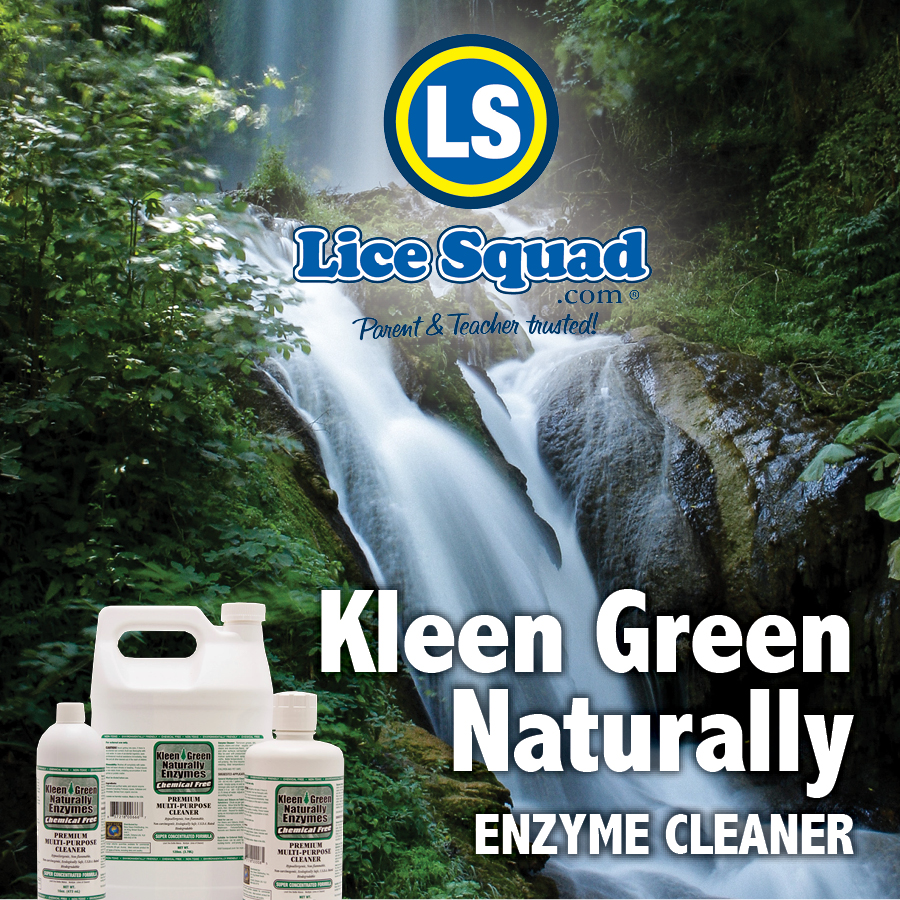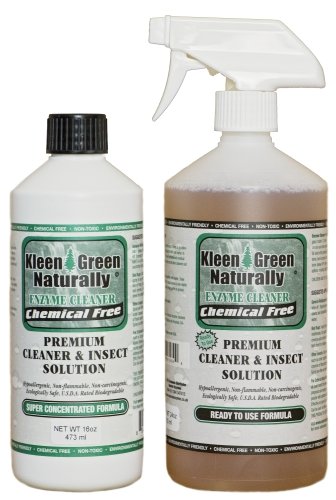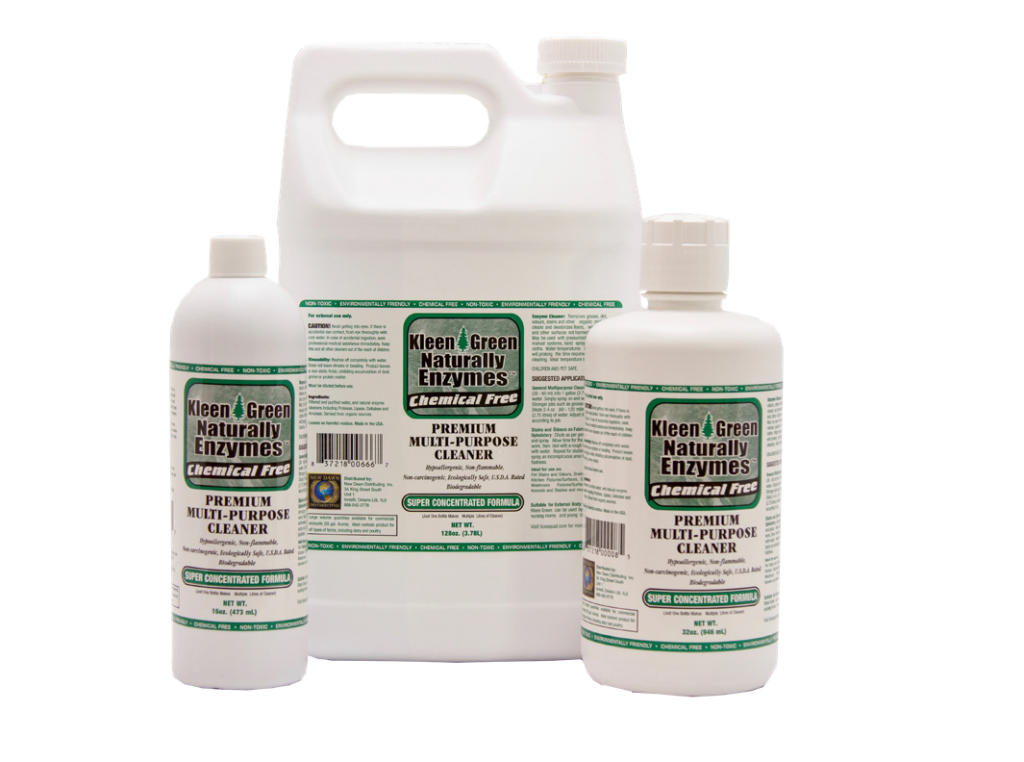
Enzymatic Cleanser for Multiple Purposes including Hospital Settings
What is an Enzymatic Cleaner?
An enzymatic cleaner is used in healthcare, institutional and other facilities to aid in the cleaning and decontamination of medical devices and other medical equipment and utensils. Enzymatic cleaners used in the Endoscopy and Sterile Processing Departments may be better known as enzymatic detergents, because they contain surfactants designed to lift soils from devices.
Remember that you cannot use an enzyme while a disinfectant cleaner is applied. The residue of the disinfectant will kill the live organisms of the enzymes.
How does an Enzymatic Cleaner work?
Bacteria are adhered to the surface and covered with food soils and other organic material (Biofilm). Standard cleansers are unable to penetrate the soil because they lack penetrating or wetting properties thus, they react with the soil forming other compounds, which may not be bactericidal. Thus, the efficacy of the cleanser is lost by the time it reaches the microbes.
In simple terms the bacteria clings to the surface, the tendency then is for the food and all organic material to form a layer over the bacteria thereby trapping the bacteria below the biofilm. As stated above the efficacy of the sanitizer is reduced, because it now must penetrate the organic matter (Biofilm) before it gets to the bacteria to kill or remove it
Enzymatic cleaners contain enzymes, which help to break down soils at a neutral pH (typically pH 6-8). There can be various types of enzymes in enzymatic cleaners, such as proteases, amylases, and lipases which break down various types of soils. All types of enzymes belong to a class of compounds called proteins. Proteins, and thus enzymes, are complex molecules comprised of amino acids that are joined together by peptide bonds.
With or without an enzyme, the same reaction (soil break down) takes place. When using an enzyme, the energy used to break down the soil is lower, and the reaction takes place more quickly. This speeding up and reducing the amount of energy needed for a reaction to take place is known as catalysis, so enzymes act as catalysts for these reactions.

BENEFITS OF USING ENZYMATIC CLEANERS
Enzymatic cleaners have various benefits in the cleaning process of medical devices, fabrics, and instruments including:
- Assisting in the removal and break down of organic soils at neutral pH
- Reducing bioburden
- Cleaning with limited mechanical action in hard to reach areas
- Offering a broader range of material compatibility than alkaline chemistries, for delicate instruments
- Effective at low concentrations and lower temperatures than detergents, allowing for smaller, more ergonomic packaging
Below is an Outline from a document called “Sustainability roadmap for Hospitals”.

Cleaning with multi-enzymatic instrument chemistries for medical device reprocessing.
Description
Use of multi-enzymatic cleaning solutions improve outcome, save money via greater efficacy and shorter cleaning time, eliminate caustic detergent chemicals and neutralizers, and improve the useful life of surgical instrumentation.
- Medical devices and surgical instruments represent a large portion of a medical facility’s spend.
- Multi-enzymatic cleaners allow for the cleaning of surgical devices to occur rapidly and with less energy
- Removal of infectious agents, organic and inorganic soil, is critical for patient and staff safety.
- Large volumes of cases and pressure to turn around sets quickly have led to reprocessing concerns, and the need to evaluate cleaners that can provide efficiencies and address needs.
- Enzymatic cleaners were originally designed as pre-cleaners for use in endo/GI labs to remove soil on endoscopes in patients’ rooms.
- In the 1990’s enzymatic cleaners were introduced to facilitate the reprocessing of surgical devices, and to provide a more neutral pH cleaning formulation for instrument preservation.
- Recent studies have shown that enzymatic cleaners may not only remove but may actually degrade infectious agents.
- When utilizing enzymatic cleaners, several factors must be taken into account including water temperature and quality, contact time, concentration, and pH.
- Some enzymes, including proteases, are more active at higher pH, and some are active at neutral levels.
- Enzymes are catalysts that speed up chemical reactions up to 1,000,000 times.
- Even detergents with the same surfactants and ingredients without enzymes take at least 10 to 15 times more contact time to achieve an acceptable outcome.
- Rinsing is important after cleaning with enzymatic cleaners to remove adherent soil and residue as enzymes in cleaning detergents keep working until they are washed away.
- Enzymatic cleaners also clean waste pipes and washing machines, and contribute to the breakdown of contaminants in the wastewater stream, as well as the target soiled devices.
- Caustic alkaline detergents release hazardous chemicals into the waste water stream, killing native aquatic species and affecting the sustainability of our planet.
- Traditional caustic alkaline detergents reduce the useful life of medical devices through pitting and corrosion, increasing instrumentation repair and replacement costs.
- Most alkaline cleaners require a neutralizer at an additional expense
- Multi-enzymatic detergents are by nature biodegradable, and some are safe for aquatic life in wastewater stream.
- pH neutral instrument chemistries are non-corrosive to delicate valuable instrumentation, extending the devices’ useful life and reducing repair and replacement costs.
- pH neutral detergents often follow the enzymatic wash step, and provide chelating action and further removal of residue.
- pH neutral detergents are highly recommended for the final wash phase when processing eye instrumentation.
- Chemical analysis using a spectrophotometer measures enzyme activity.
- Some enzymatic cleaners contain only one enzyme or two enzymes that are the same type, such as two proteases.
- Multi-enzymatic detergents containing more than one type of enzyme will remove more types of soil like blood, fats, starches, and carbohydrates, than single or dual protease cleaners that only address protein.
- Multi-enzymatic cleaners come in ready-to-use and super-concentrated varieties that can work for pre-cleaning, soaking, automated washers, manual cleaning, and for one brand in ready-to-use single use wipes for manual cleaning.
- Liquid multi-enzymatic cleaners can be dosed for concentration unlike solid brick cleaners which melt and cannot be measured.
- Liquid multi-enzymatic cleaners demonstrate significant savings, providing a better ROI than other cleaning chemistries.

WHERE TO BUY AN ENZYMATIC CLEANER
www.licesquad.com is the ONLY Canadian distributor of this product.
1-888-542-3778




